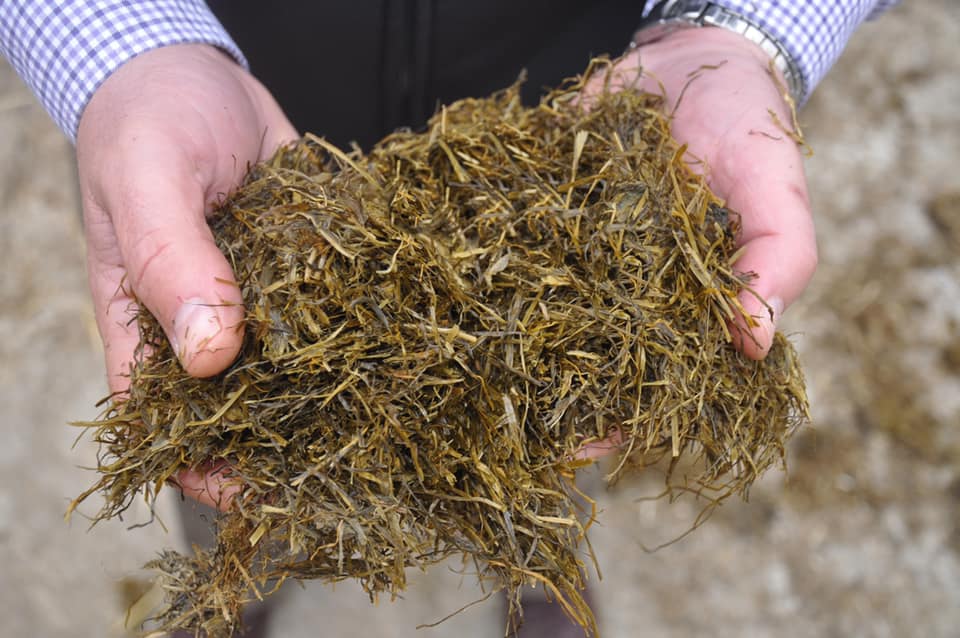Can you tell the quality of silage by the smell?
The answer to that question is sometimes yes, but sometimes no. When producers detect ‘sweet’ smelling silage, they often think that this is good. However, this is not necessarily so, since that sweet smell is probably coming from high concentrations ethanol (produced by spoilage yeasts) mixed with acetic acid.
A high concentration of ethanol that is usually easily detected in high moisture grain and cereal silage is an indicator that a significant amount of dry matter (DM) may have been lost. This silage will likely heat very rapidly in the feed passage.
In fact, the best type of silage fermentation, where lactic acid is the primary end-product, should have little or no distinct smell because lactic acid has almost no smell.
Butyric acid silages smell rank, rancid, and some times fishy, due to protein breakdown. The butyric acid smell is commonly associated with silages that are too wet. You probably will never smell this odour if silage has a dry matter content greater than 35 to 40%. Ironically, silage with a high butyric acid content is very stable when exposed to air and will not heat, but this silage is low in energy content.
If your silage smells like vinegar, this is a sign that the fermentation produced end-products other than lactic acid because that vinegar smell is acetic acid. Silage with high concentrations of acetic acid are usually stable when exposed to air but high concentrations of acetic acid can sometimes depress dry matter intake in cattle.
Another common smell in silages is often associated with very dry silages (usually greater than 45-50% DM) and can be described as a ‘burnt tobacco’ or ‘molasses’ type of smell. This smell comes from the fact that excess heat has caused proteins to bind with fibre and sugar molecules in a non- enzymatic browning reaction. A mildly, sweet tobacco/molasses type smell is acceptable in grass silage but any hint of this smell in whole crop is a definite indicator of heat-damaged protein.
In all silages, when the smell turns from tobacco-like to burnt, you can be sure that excessive heating has taken place.
Silages suspected of having excess heat damaged protein will have a very low protein content and should be balanced accordingly.
The last smell that is commonly associated with silages is the ‘musty-mouldy’ smell that develops when silage has undergone aerobic spoilage. The smell of mouldy silage is very distinct. Silages that smell mouldy are usually hot and steamy (or have already heated and cooled down). In addition to extensive losses in nutrients and dry matter, such silages are very unpalatable.
Silages should be wilted to the correct moisture, and chopped to the correct length. Silos should be filled rapidly, packed tightly and sealed quickly. Use of various silage conservation aids can be helpful but are no substitute for good management.
For more information please contact your local sales representative or call the office on +353 (0)74 917 1300.
